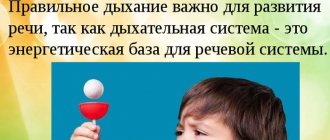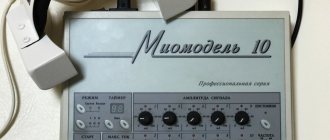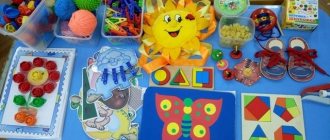Hello, friends! What are you complaining about? Is your child's reading technique poor? Okay, we'll treat you. Keep the recipe. I am prescribing special exercises for you to develop your reading technique. Take regularly, several times a day. And the reading technique will firmly stand on its feet, and then leap forward.
Such magical exercises really exist. And if you try, you can find hundreds of different techniques, approaches, and methods on the Internet. To be honest, my eyes widen, and my brain begins to slowly boil. You don't know what to choose.
In order to protect my readers from such problems, I allowed myself to make the choice myself. The article included only the most interesting and tasty, in my opinion, exercises that will undoubtedly help raise reading technique to the level required by the Federal State Educational Standard. I do not claim their authorship; they were developed by professionals: teachers, psychologists, professors.
But I claim to be the author of their names. They are too boring in the original version. Agree, “The Mystery of the Missing Sentence” sounds much more fun than “Visual Dictation by Professor I.T. Fedorenko." And it will certainly arouse greater interest among younger students.
List of exercises
And here he is! List of special reading exercises:
- "Half a watermelon"
- "Lost Letters"
- "Very sharp eye"
- "Sherlock"
- "Through the Looking Glass"
- "Mad Book"
- "The Birds Have Arrived"
- "Partisan"
- “Oh, once! Again!"
- "The Mystery of the Missing Proposal"
Bottom line
In this article, we discussed speed reading for children and learned that a child can be taught speed reading immediately after he learns to read whole words. And so that he can learn this faster, we have developed a special simulator that not only a child, but also an adult can train with!
Training on such a simulator helps you quickly learn to read words. All you need is to select the desired mode and start training. Don’t forget to sign up for our Speed Reading course in 30 days.
Exercise 1. “Half a watermelon”
Ask your child if, after seeing half a watermelon, he can imagine what a whole watermelon looks like? Of course, the answer will be yes. Now suggest conducting the same experiment with words.
Take a book and an opaque ruler. Cover one line in the book with a ruler so that only the top of the words is visible. Task: read the text, seeing only the tops of the letters.
Move the ruler higher and show only the bottom of the words. Let's read. This, by the way, is already more difficult.
For very young schoolchildren, you can offer another version of the game. Make cards with simple words. And then cut these cards into two halves along the words. You need to connect the two halves correctly.
How is it useful? Aimed at developing anticipation. Anticipation is foreknowledge. This ability of the brain, which gives us the opportunity, when reading, not to read absolutely all the words and letters. The brain already knows that they are there, so why waste time on them? Anticipation can be developed; it makes reading fluent, conscious, and easy.
At what age to start
You can hear a widespread opinion that you can start teaching your child speed reading techniques at any age, since indirectly it develops attentiveness and improves memory. Experts have the opposite opinion on this matter and are convinced that this reading technique is suitable for children over 14 years of age.
During this period, teaching of various sciences begins at school. Physics, chemistry, algebra and other complex subjects appear. Schoolchildren are faced with the problem of mastering large amounts of knowledge in a short period of time. This is why these useful skills come in handy: reading a large amount of information and at the same time assimilating it well.
When engaging in speed reading with a child at an early age, there is a risk of developing the wrong cognitive strategy. First of all, you must read correctly and correctly.
If by the age of ten there are no problems with reading, you can begin to increase your speed. It is important to understand that speed reading does not teach you to read, but rather teaches you how to do it as efficiently as possible.
According to the Waldorf school
This school involves the all-round development of the student. The emphasis is on maximum knowledge of the exact sciences and humanities. Training in speed reading skills begins at the age of 5-7 years and is very intensive. The Waldorf school and its teaching methods are common in some European countries. There are very few such schools in Russia; they exist only in some cities of the Russian Federation.
According to Zaitsev's method
This technique is based on “Zaitsev’s cubes” and is designed for teaching reading to children over two years old. It can be used in kindergartens, schools, and at home. Shows good results when working with children with developmental disabilities - ODD, mental retardation, alalia and other speech and mental disorders. The Zaitsev method is used in working with children with visual and hearing impairments.
The training is based on the analytical-synthetic method - the use of stackable blocks in a playful way.
The letters are large in size and can be seen even from a distance of several tens of meters. This is necessary so that children do not have difficulty looking at them. The cubes themselves are painted in different colors - red, gold, green and others, while they are all different sizes and have fillers inside that make characteristic sounds when shaken. This is done with the aim of quickly and reliably memorizing sounds, letters, and syllables. This technique has a number of other positive effects:
- develops writing skills;
- corrects speech therapy speech defects;
- speech becomes clear and intelligible;
- vocabulary increases;
- logic develops;
- independence of learning develops.
There are statistics about when children start reading. Children aged 2-4 years begin to read after 6 months of classes. Children over 4 years old after 16 lessons. Children six years old can start reading after just 6 lessons.
Montessori method
The goal of this technique is to create an environment where the child will develop with minimal adult intervention, but under his control. The child chooses the activity and duration of training. In practice, this is a space that is maximally adapted for a child, taking into account his age, physiology and other individual characteristics.
He has at his disposal all the toys with which he can perform any manipulation. Classes are held in this space. It is divided into five zones that are responsible for your side of the personality:
- practical life zone;
- sensory development;
- math zone;
- natural sciences zone;
- speech development.
Nowadays a huge number of such children's centers have appeared, but it is difficult to find a really good one. This is due to the shortage of specialists who know the Montessori method perfectly.
Andreev's Speed Reading Method
This technique was developed by Oleg Andreev. It allows:
- increase reading speed by more than five times;
- improve reading comprehension;
- retain acquired knowledge in memory;
- improve attention;
- increase interest in the learning process.
Andreev’s programs consist of several classes:
- sprint;
- dominant;
- satori;
- fifth way;
- sixth sense;
- Fourth dimension.
The method consists of constant training. Gradually, the child stops reading words and perceives them as pictures. This greatly and quickly increases your vocabulary. Those who have gone through this technique read several times more books than their peers.
Lysenko's technique
This program was developed by Olga Lysenko, a teacher with more than 20 years of experience. Her method consists of four courses:
- multiplication table;
- ABC;
- beautiful handwriting;
- reading without syllables.
After completing all the courses, the child will quickly learn to write, read, and add numbers well.
Doman's technique
Consists of a set of physical and intellectual exercises and simulators. Doman is a proponent of the theory of the connection between physical development and mental development. By doing physical exercises, parents simultaneously stimulate his mental development. The methodology is based on classes aimed at all aspects of the child’s development.
Gorbov-Schulte tables
This is a test to assess the ability to shift attention. It is often used by psychologists to assess concentration. The table consists of red and black cells.
An example of a Gorbov-Schulte table for speed reading training.
Exercise 2. “Lost letters”
Another exercise to develop anticipation.
Letters and words sometimes get lost. But even without some letters and words we can read. Shall we try?
Write on paper, print or write with a marker on a special board the phrases that you see below.
Bookshelf.
New... T-shirt.
Big...spoon.
Red... cat.
Here's another phrase:
Bobik ate all the cutlets
He doesn’t share…….
And here are some more:
Ok-ok-ok - we will build…….
Yuk-yuk-yuk - ours is broken......
Task: read by guessing letters and words that are not there. For the next lessons, come up with your own phrases, use new phrases, catchphrases, and proverbs.
Texts for speed reading
The skill of not reading individual words letter by letter, but perceiving them holistically, is well developed in special texts for quick reading. All of them are distinguished by their non-standard presentation of material and force our brain to deviate from its usual patterns, forming new neural connections.
Texts for speed reading are:
- with missing letters;
- rotated 90 or 180 degrees;
- with torn and shifted stitches
- with stripes, grilles or other “noise interference”;
For children, speed reading with the help of such texts turns into a game. It’s easy to get a child involved by organizing a competition with rewards or training against the clock. You can prepare some of the materials yourself - for example, cut out a “lattice” from paper of the appropriate size and place it on the pages of ordinary books.
Here are a couple of useful resources:
- universal texts for training speed reading;
- children's texts to test reading speed.
Exercise 3. “Eye is a diamond”
Look at the picture and draw the same rectangle. Place numbers from 1 to 30 in the cells, in random order, but not one after another. The numbers should be randomly scattered across the cells.
The schoolboy looks carefully at the picture with the sign.
And now, together with him, begin to count out loud: one, two, three, and so on until thirty.
The counting is even, not too fast, but not too slow.
Child's task:
- on the count of one, find and point to one with your finger;
- on the count of two - deuce;
- three - three, etc.
If a child hesitates with some number, then the score is not waiting for him, he needs to catch up, look for it faster. For kids, you can draw smaller signs, for example, 3X3 or 4X4.
What is the point of the exercise? It is aimed at increasing the viewing angle. In order to “catch” with your eyes when reading not one letter, not one word, but several words at once, or an entire line. The wider we look, the faster we will read.
One table can be used two or three times, then the arrangement of the numbers needs to be changed.
Problems
Training speed reading involves some difficulties. Unprepared children have poorly developed peripheral vision and articulation, and have defects in mental skills (attention, memory).
- Narrow field of view. To master the technique of fast reading, you need to have a wide range of vision. The eyes should not focus on one word. The task of a speed reading teacher is to teach the student to perceive the text as a whole, that is, the gaze should stop not on individual words, but on the spaces between them, immediately capturing a phrase or sentence.
- Eye regression. This is the main enemy of speed reading. The student returns to the text he has already read, wasting time. Eye regression occurs automatically. The process can be controlled using training exercises.
- Suppression of articulation. When reading at a normal pace, children try to pronounce words clearly and loudly. This helps to absorb fiction. For example, it is impossible to perceive poetry accurately and feel the author’s mood without pauses or logical stresses. But for dynamic reading, diction is not needed. Pronunciation reduces the speed of text comprehension.
- Undeveloped attention. High reading pace requires increased attention. This is necessary for instantly highlighting the main and secondary, deep understanding of new information.
To eliminate defects and develop fast reading skills, you need not only to constantly train, but also to adjust the width of your field of vision, give up internal pronunciation of words, control regression, and develop attention and memory. The following exercises will help with this, which are included in the training system, devoting a few minutes to them in each lesson.
Exercise 4. “Sherlock”
Place the words on a piece of paper. Very different, not very long. In no particular order. Kind of scatter them across the paper. Name one of the words and ask the child to find it. Words could be, for example:
frame, jelly, spoon, chair, horse, gold, soap, pen, mouse, mouth, knee, dog, summer, lake, cancer
Each next word will be found faster than the previous one. Since, while trying to find one word, the student will read others along the way and remember where they are. And that's all we need.
Thanks to Sherlock, the viewing angle increases. And reading speed.
Definition of speed reading
| Speed reading is a skill that helps you quickly structure and assimilate text information. To develop it, a number of special techniques will be useful. The task of speed reading is to optimize the reading process in order to perceive larger units of information, using the brain’s ability to “complete” the missing parts of the picture according to the available data. |
The development of speed reading allows schoolchildren and students to spend less time on homework, preparing for exams, and searching for material for essays and dissertations. The ability to read quickly is also useful for adults, because in many professions they have to deal with a large flow of information.
There are several approaches to the question of how to develop reading speed. Many of them are based on the fact that this speed depends on the order in which information is read, and it can be rearranged. At school, children are taught to read according to a certain pattern: first individual syllables, then words that form sentences, and finally a meaningful test.
Having matured, many continue to use the same algorithm: word - sentence - text. But our brain also has access to a more complex order that will help save time. Let's look at how to master speed reading using specific exercises and techniques.
Receive letters about children's education
Find even more lifehacks for teaching children in the free Skysmart newsletter for parents. Every week, teachers, methodologists and psychologists share expert advice: how to motivate a child to study, help with homework or not, what skills to develop today in order to be successful and happy in the future. Join us!
Exercise 5. “Through the Looking Glass”
We found ourselves in a world through the looking glass, and everything is the other way around. And they even read everything not from left to right, but from right to left. Shall we try?
So, we read the lines in the books from left to right. Let me clarify, there is no need to turn the words themselves around. There is no need to read “tomegeb” instead of “behemoth”.
With this method of reading, the meaning of the text is lost. Therefore, all attention is switched to the correct and clear pronunciation of words.
Don't Make These Mistakes
Often, even capable children show poor readiness for reading due to methodological errors at the initial stage of learning syllabification. Self-study at home has an impact. Parents commit the following typical violations:
Tell the baby a letter, not a sound
For example, “Pe”, “Ne” and so on. This is not true. The names of letters from the alphabet must be pronounced without an additional sound: “K”, “M”...
Memorizing letters with overtones will lead to problems with reading. The child puts the syllables together like this: “pea-pea” instead of “pa-pa.” Short and clear sound pronunciation is the main rule and condition for a fast reading pace.
Compose syllables from individual letters
Assignment: look, “b” and “o”, it turns out “bo” - methodologically incorrect. Teach children to immediately extend the vowel, without a pause between sounds: “bo-o-o-o.” Avoid spelling words. This is easier for children, but it takes time to analyze words into their component parts, and the meaning of phrases is lost.
They read texts for a long time
Conduct classes often, spend 5-7 minutes on one thing. It is better to read a short passage from the text, a couple of sentences at a good speed, than to keep a student at the table for half an hour and force him to study. Short lessons are more effective. Don't forget to take breaks between exercises, about 2-3 hours.
Important! Consider the child’s mental characteristics: memory capacity, maximum attention span.
If a teenager can concentrate and study for 15-20 minutes, it is not tiring, increase the duration of the lesson, but reduce the number of lessons per day to one or two.
Exercise 6. “Mad Book”
Tell your child that sometimes some ill-mannered books behave rather strangely. They suddenly take it and turn upside down.
The child reads aloud. After a while you clap your hands. The child's task is to turn the book upside down and continue reading from where he left off. At first, you can make marks with a pencil so as not to get too lost in the text. And so on several times. Two, three full turns of the book.
If your student is only in 1st grade, or maybe in 2nd grade, but reading is still very difficult, then you can read not a book with texts, but short simple words printed one after another on paper.
What will it give? Eye coordination and the ability to navigate through text will develop. A letter standard will be formed. And the processing of information by the brain will improve.
Reminder about visual gymnastics
Of course, we must not forget about the schoolchild’s eye health!
Reading is very straining on the eyes, so I would like to advise you on visual gymnastics exercises.
1) At the beginning of the warm-up, you need to close your eyes and briefly, without pressure, massage your eyelids with your fingers.
2) Bring your eyes to the center (look at your nose), and then up (to the ceiling), repeat alternating actions.
3) Then roll your eyes in the directions indicated in the image, lowering/raising your eyelids.
4) Then the child should look at some close and distant objects, alternating actions.
5) At the end of the warm-up, you should massage your eyes in the same way as you did at the beginning.
Exercise 7. “The birds have arrived”
Show your child the phrase “the birds have flown.” And ask to read it:
- calmly;
- joyfully;
- loud;
- quiet;
- sad;
- with irritation;
- with fear;
- mockingly;
- with anger.
What will this give us? Ability to read expressively. And convey feelings and emotions with your voice. Don't get hung up on this one phrase. You can read proverbs, sayings, and tongue twisters with different intonations.
Take breaks
You need to practice for 10-20 minutes, giving the child time for a short break. After a good workout, the break should be 20-30 minutes, no less, so that the brain has time to form new neural connections. This greatly increases efficiency.
During the break:
- you cannot: read, write, watch TV, play games, sit with a phone or tablet.
- you can and should: relax, take a walk, breathe fresh air, eat (if it’s time, you don’t need to eat again), play with soft toys, drive the car, and so on.
Exercise 8. “Partisan”
The student reads the text (or individual words, if he is still very young) aloud. You say: "Partisan". At this signal, the student takes a pencil into his mouth (presses it between his lips and teeth) and continues to read to himself. At the signal “The partisan has escaped,” we take out the pencil and read aloud again. And so on several times.
Why is this? To eliminate pronouncing words while reading silently. Pronunciation is the enemy of fast reading. So you need to remove it. And when a pencil is clamped in your teeth, you won’t be able to speak.
Reading speed standards for grades 1-4 (words per minute)
Interesting fact! According to the Guinness Book of Records for 1990, Howard Berg was declared the fastest reader in the world, who announced a result of 25,000 words per minute. Outwardly, such reading should look like ordinary page turning. But doubts arose about the reliability of this record back in the 1990s, and as a result, Howard was banned from advertising his speed reading courses.
More realistic data was obtained by Ronald Carver, a professor at the University of Missouri in Kansas City, who studied speed reading in the 1980s. For testing, he invited the winners of specialized competitions, editors of magazines and newspapers - in short, people who can quickly work with texts. But in the end it turned out that when understanding the text at least 75%, none of the participants was able to overcome the barrier of 600 words/min. Yes, this result is much above average, but it is very far from the record. This is probably what you should expect when mastering speed reading techniques.
Exercise 9. “Oh, once! Again!"
For this exercise we will need a stopwatch and a text to read.
Read for 1 minute. We pay attention to reading speed, but you can forget about expressiveness for now. Ready? Go!
The minute is up. Stop! Let's make a mark where we left off.
Let's rest a little and read the same text again. Go! In a minute we make a notch. Wow! Already more.
What will happen the third time? And the third time will be even better!
What does this give us? Increase reading speed. And the child's motivation. He will see for himself that he is capable of more.
What's happened
Speed reading is a person’s ability to perceive text at high speed. It is to perceive, and not just mechanically read. If you teach a child to swallow words at a phenomenal speed, without understanding what he has read, then speed reading will not help you with your studies, but quite the opposite.
Speed reading in the correct sense is usually understood as a developed skill in processing educational text. These are paragraphs from textbooks and articles on scientific topics. The reading speed should be at least 120-150 words per minute. At an older age it reaches up to 200 lexical units.
Any child can learn to speed read. But, according to psychologists and teachers, the optimal age is from 10 to 12 years. Although children 7 years old and even 6 years old have positive experience in using the technique.
Exercise 10. “The Mystery of the Missing Sentence”
In order to solve the mystery, we will need cards with sentences (look at the picture). There are 6 cards in total. Each has one sentence. The font is large and easy to read.
Let's prepare a notebook and pen. Let's start the exercise:
- Show your child the first card.
- The student reads the sentence and tries to remember it.
- After 6 - 8 seconds, remove the card.
- The child writes the sentence in a notebook from memory.
- Show the child the second card, etc. until the sixth sentence.
What's the point here?
As I already said, this is not actually a game, but visual dictations developed by Professor I.T. Fedorenko. There are 18 such dictations in total. Each has six sentences.
In our example, I used the very first dictation. What is their feature? Please count the letters in the first sentence of the dictation. There are 8 of them.
In the second - 9,
in the third - 10,
in the fourth and fifth 11,
It's already 12 in the sixth.
That is, the number of letters in sentences gradually increases and eventually reaches 46 in the last sentence of dictation 18.
You can easily find the texts of Fedorenko’s dictations on the Internet. One dictation can be used twice, three times, if the child cannot do everything correctly. By the fourth time everything usually works out.
It is convenient to use Microsoft Power Point to complete this exercise. The one in which presentations are usually made.
By playing “The Mystery of the Missing Sentence” you develop your working memory. When such memory is poorly developed, a child, having read the sixth word in a sentence, will not be able to remember the first. Practice visual dictations every day and you won’t have such problems.
Rules for improving reading skills
There are some things that you should not forget about when learning to speed read.
- The literature you choose should be appropriate to the age of your child.
There is no need to rush and complicate his task by forcing him to read something more mature and “smart” in order to expand his vocabulary and teach the baby something.
Everything has its time!
- Do speed reading only if the child wants it and is interested in reading.
Provide him with comfortable conditions.
If the child does not want to develop his skills or something distracts him, you can forget about the success of this business.
In addition, classes should begin only when the child has already learned to read not by syllables, but by words.
- During classes, do not forget to take regular breaks.
Let the child do visual gymnastics (I’ll tell you a little about it at the end), warm up, rest, and with new strength begin to conquer new heights!
- Encouragement and encouragement are an integral part of the process, which contributes to success in developing your child’s skills.
Focus his attention only on positive attitudes and never compare him with other children!
If you want to compare your child with someone, then compare him with him yesterday!
Let the younger student have a desire to break his own records, and not evaluate himself in accordance with others.
- It will be wonderful if a child sees an example of a love of reading in your face!
Let the baby see his parents (authoritative people for him) more often with a book in his hands (not only in the process of wiping the dust).
Working with syllable tables
To increase reading speed, it is important to train the child to perceive a syllable as a whole, as the basis for reading a word. For such exercises, special tables of syllables are required. You can use didactic material to teach reading according to N. Zaitsev’s method or create such tables yourself.
Children are offered various tasks:
- read a line or column with a specific letter;
- arbitrary reading of syllables;
- find the indicated syllable in the table;
- Show the word in the table syllable by syllable.
First, tables with simple syllables are used, and then move on to more complex ones, consisting of three or four letters. You can buy colorful tables in the educational literature store as cards, posters or collection books. For example, Uzorova, Nefedova: The fastest way to learn to read. Syllable tables.
- Presentation “Syllable tables for pronunciation and literacy lessons in 1st grade.










